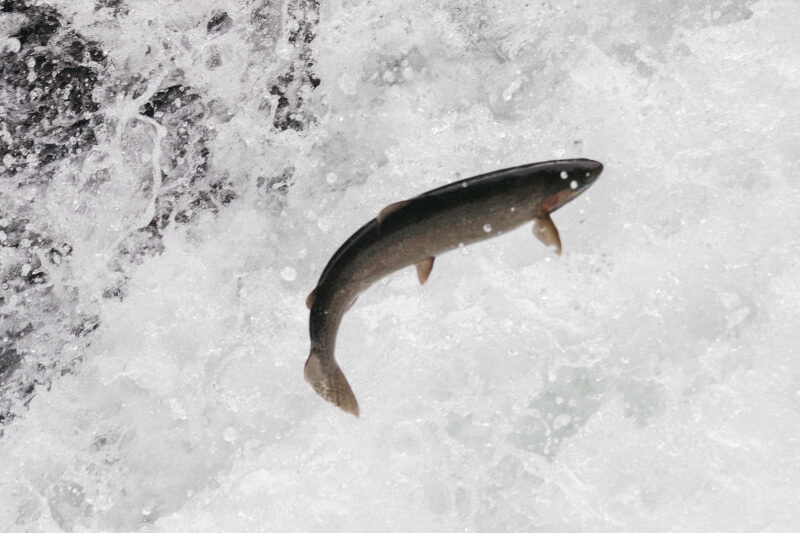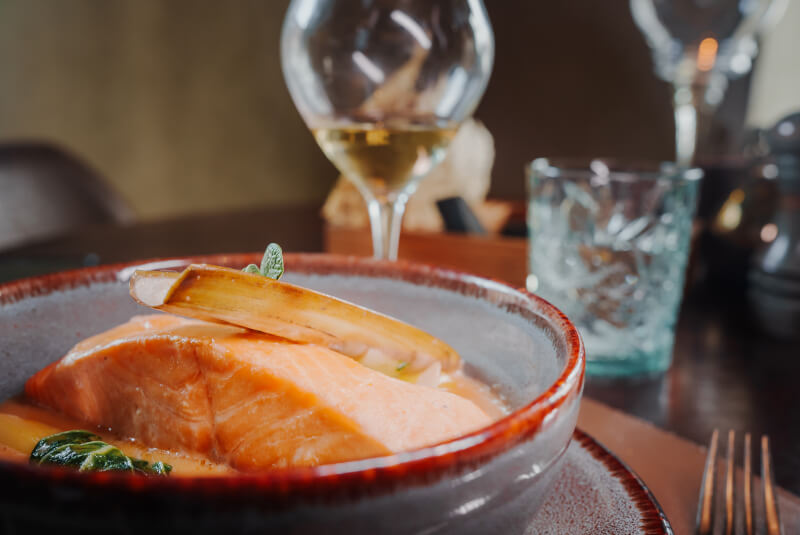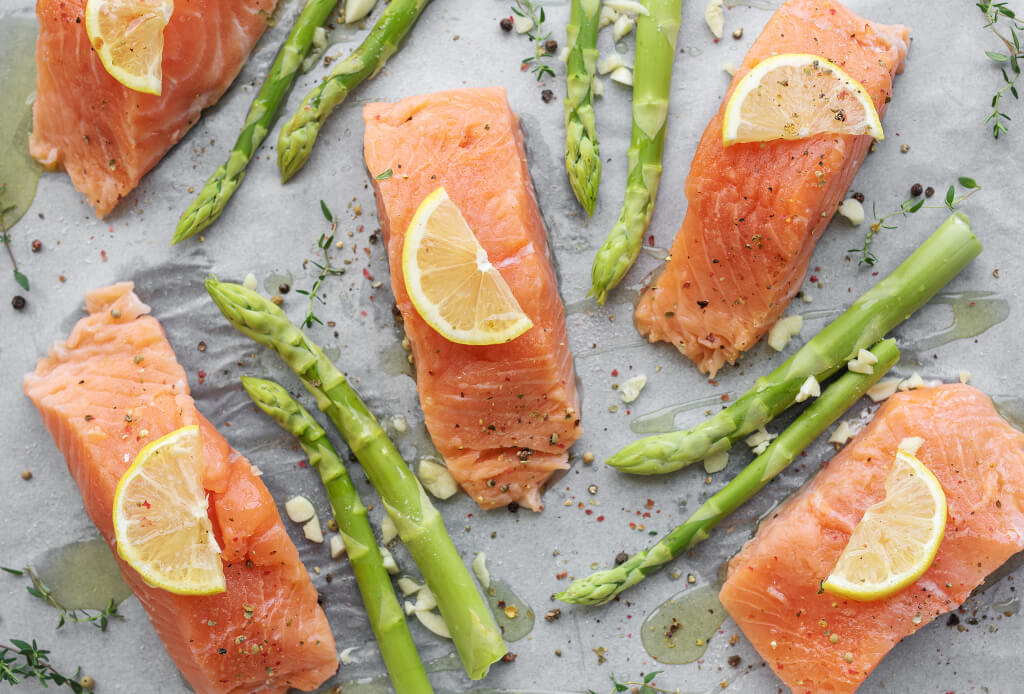Scotland’s rich history and culture are reflected in its celebrated industries of whisky and salmon fishing.
The Great Rivers of Scotland
As Bob Mortimer noted on the most recent episode of Mortimer & Whitehouse: Gone Fishing, “I have dreamed of catching salmon since I was a lad.” To accomplish this, Mortimer and his co-host Paul Whitehouse traveled to Scotland’s longest river, the Tay.
The thrill and challenge of salmon fishing were brought to light on their guided fishing expedition. Atlantic salmon, despite their elusive nature, have come to symbolize Scotland. The British Ecological Society found that fish in the North Atlantic move from rivers to the ocean to look for food before going back to rivers to breed. Anglers should get their rods out during this migration.

The Tay is considered one of Scotland’s “big four” salmon rivers, together with the Tweed, the Dee, and the Spey. All of these rivers are stunning in their ways, but local lore has long centered on the Spey. Gordon, a local fisherman, estimates that a day of fishing on one of these rivers could cost as much as £350 per rod. However, the typical price is less than £100, dropping to around £40 in the off-season.
Even though Scotland’s rivers are frequently talked about in terms of their beauty and salmon fishing, it is important to take into account how important they were to Scotland’s history. For hundreds of years, Scots have relied on the Tay, Tweed, Dee, and Spey rivers. Not only did they serve as critical salmon habitats, but they also played an important role in the growth of early Scottish society as transportation arteries. Knowing the geology of these rivers can also provide important context in addition to their historical development. For instance, the swift flow of the Spey River is affected by the region’s distinctive topography, which in turn affects the habits of the local fish and the subtleties of the region’s whisky.
The Whisky and Salmon Industry in Scotland and Its Distilleries
There’s more than simply a geographical connection between whisky and fish. One of the most picturesque stretches of the River Spey runs right by the Macallan Estate. Within the boundaries of the estate, Macallan owns exclusive fishing rights to a stretch of river known as its “beat.”
In this tranquil area, fishing is like listening to the lovely cadence of Macallan. This is accomplished by the ‘ghillie,’ or estate attendant, who guides the anglers and fosters the relaxed atmosphere common to fishing expeditions.
The ‘beats’ on the estates of famous distilleries are more than simply good places to go fishing. They are the meeting point of business, athletics, and custom. Some estates, like Macallan, have come up with clever ways to manage their rivers while also distilling whisky. As an illustration, the waste from distillation can be used to make the land near rivers more fertile, which is advantageous for the environment. The whisky-making and salmon-fishing practices that the ‘ghillie’ facilitates also serve as symbols of the hospitality that is intrinsic to Scottish culture.
How Is It Affecting The Environment and Economy
Gordon and people like him know that making whisky and fishing for salmon are important to the economic and cultural health of their communities.
Gordon, on the other hand, has been quite vocal about the issues surrounding the decline of salmon stocks, which he places at the feet of humans, predators, and global warming. Scotland’s strong salmon and whisky industries may be at risk if these environmental issues aren’t resolved.
The environmental dangers that salmon populations face have been outlined. Both wild salmon populations and aquatic ecosystems, in general, are put at risk by the intensive farming practices that are used to raise farmed salmon. The economic success of Scotland’s tourism business is tied closely to the whisky and salmon fishing industries. Whisky aficionados travel to Scotland to see where their favorite liquor is made, while fly fishers flock to the country’s famous rivers.
Salmon and Whisky: A Winning Combination

The fish farms in Scotland produce salmon that is second to none. Salmon is the United Kingdom’s second-highest export after whisky, with a value of £59.9m in the first three months of 2019, according to the Food and Drink Federation.
The culinary odd couple of whisky and salmon. Ghillie Basan, a Scottish cuisine writer, shares her recipes for curing fish in whisky. To add new dimensions to the cured fish, she uses whisky that has been aged in a variety of casks, including Sherry, Bourbon, rum, and Cognac.
Scotland’s innovative approach to food is on full display with the marriage of whisky and salmon. Several more gourmet treats have been developed outside of the field of whisky-cured gravlax. For example, you can add a unique twist to traditional smoked salmon by marinating it in whisky. The smokiness and sweetness of the whisky pair wonderfully with the fish. Scottish dining customs also emphasize the complementarity of salmon and whisky. Whisky pairing has a similar effect on the enjoyment of salmon as wine matching does.
The Perfect Companion
Ewan Gunn, worldwide Scotch whisky master for Diageo, suggests pairing scotch with smoked salmon. He says that the whisky’s sweet smoke and citrus overtones complement the smoked salmon’s beefy mouthfeel and saline, seashore flavour well.
We have highlighted the flavor complementarity between Caol Ila’s 12-year-old whisky and smoked salmon. Yet there’s more to this couple than meets the eye. Traditional Scottish fare like whisky and smoked salmon showcase the country’s abundant natural resources. The pure, calm waters of Scotland’s rivers are ideal for growing salmon and making whisky. Take into account the contrast in textures: the whisky’s smoothness and the salmon’s richness complement each other well.
Whisky and Fish Share a Love of Wood
The Glen Moray Distillery manager, Graham Coull, agrees, saying, “The whisky spirit in the wood adds a caramelized sweetness on top of everything else.” Salmon smokers frequently inquire about this. It complements the classic oak smoke taste.
Oak staves are an integral part of the Scottish economy and environment due to their use in the aging of whisky and the smoking of salmon. The ancient oak woods of Scotland have provided timber for everything from ships to barrels, illustrating the interconnectedness between the natural world and human endeavors. Whisky and smoked salmon are both affected by the type of oak used in the smoking process. There is an additional degree of complexity introduced by the different types of oak used to age whisky and salmon; for example, American white oak tends to contribute sweeter notes, while European oak tends to give spicy flavors.
Whisky and salmon are a superb representation of Scotland’s culinary and cultural traditions. The connection between the two improves our understanding of the country’s past and the significance of environmentally responsible preservation practices for cultural assets.

